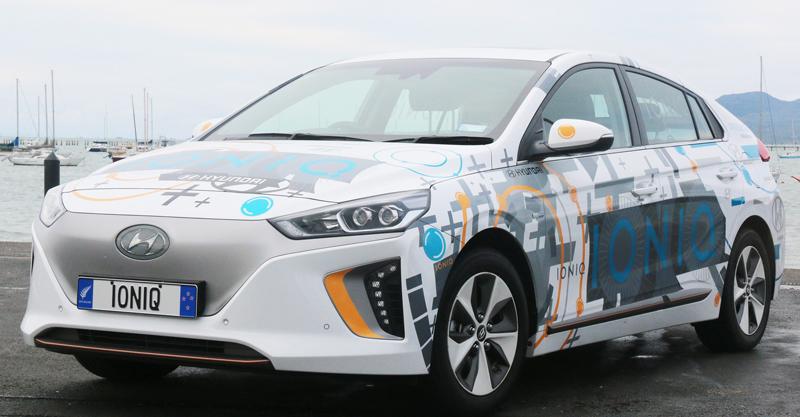Cathy Parker looks at the practicality of the Ioniq EV for everyday use.
Seven days with only needing overnight recharging shows how an EV can be practical for normal commuting. A longer trip would introduce some challenge whilst the charging station network gets rolled out, but the realistic 180 km range of the Ioniq means you would have to drive a lot around the city in a day for range anxiety to rear its ugly head. I did several shorter business trips one day plus a longer motorway run and still had around 110 km range showing as available (This was after 70 km with about half in bumper to bumper traffic with lights, wipers and heater on).
The Ioniq offers three driving modes with some fine tuning available in each, ECO restricts performance to maximise range including having a 110km/h speed limit dialled in, normal drops the speed limit and increases performance, whilst sport gives full performance with a decreased range. You can also select three levels of regenerative braking, 0ne is minimal and three is strong and also adjust the climate system settings to conserve power if required. The only issue I had was that the system didn’t seem to retain your preference for the next time (I set ECO for regenerative braking level three but it defaults back to level one when turned off). I tended to use ECO for heavy traffic commuting and normal for lighter traffic when you could use the performance. Sport was just for fun, the Ioniq definitely performs strongly in Sport mode. Whilst power at 88kW is similar to say a typical 1.6-litre car the massive 295 Nm of torque is close to double a similar size petrol vehicle and it shows.
Charging at home is simple – just plug it in (after a days use it showed between 6 and 12 hours to charge), you may want the optional home charger ($1500 plus $1000 installation) giving four to five hours charging time from empty.
Apart from a slightly techy dash board the Ioniq feels like a normal car, the first disconnect is in starting – press the start button and nothing happens (except to display) no starter – no noise, select a gear (push buttons for Forward, reverse and park), disengage electric park brake and you move off – silently.
There are no gears so driving is simply about accelerate, brake and steer, handling and road holding seem normal although if you have the lane assist on the steering feels off strange on the motorway as it tries to out think you giving it’s own inputs – if you grip the wheel softly it will essentially self-steer round a motorway bend but if you try to take hands off it gives a warning to put them back on even though it follows the curve. The lane assist and autonomous emergency braking are standard on both the entry model and the Elite, as are front and rear parking sensors and reversing camera, 8.5 inch screen with Apple CarPlay and Android Auto whilst the Elite gains leather seats with electric adjustment for the driver, heated steering wheel, LED headlights, wireless phone charging, keyless entry and start and dual zone climate control.
Boot space is limited by the deeply sloping rear and if you want to carry normal and fast charge cables it is further reduced.
The Ioniq is surprisingly normal, the only times you really need to consider it is an EV is when you plug it in at night, when you want to head out of town and whn you don’t get a fuel bill at the end of the month.
____
Specifications
Body type Hatchback
Drive FWD
Engine type Electric Engine capacity EV
Max power 88 kW
Max torque 295 Nm
l/100km (Combined) 0
C02 emissions 0
Boot capacity 674 L
Spare tyre Tyre Kit
ANCAP rating 5 Star
Price $65,990



